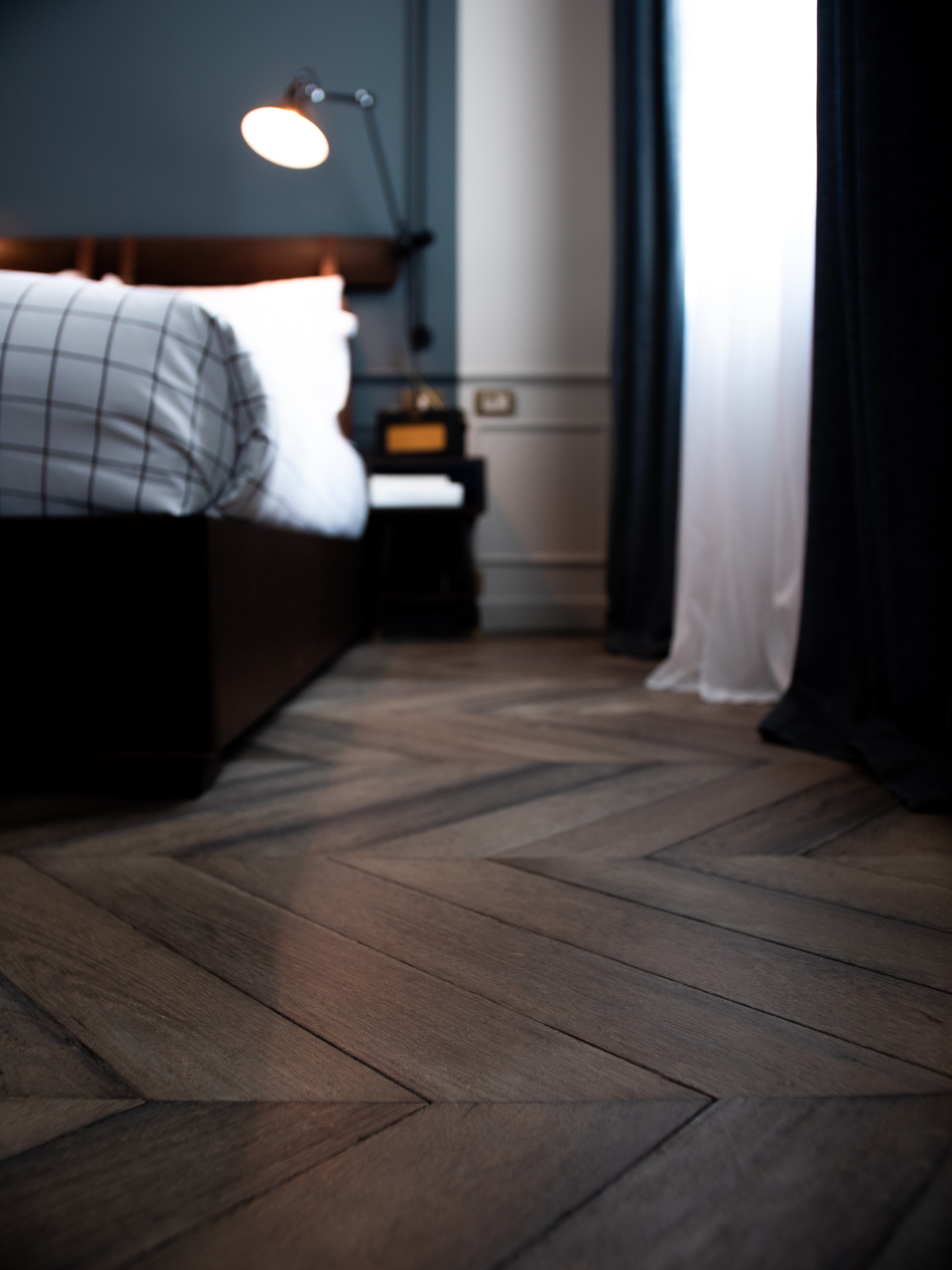If you have experienced yellowing vinyl floors then don’t worry, we have created this guide to tackle the reasons for a vinyl floor turning yellow and the methods that can be used to deal with this issue.
The most common reason for yellowing vinyl floors is usually due to rug pads or backing, but it can also happen as a result of wear and tear over time as well as contact with hot water.
Let’s dive straight into the most common causes for yellowing vinyl floors to understand how you can prevent it from happening in the first place.
Reasons For Yellowing Vinyl Floors
Although some reasons for yellowing vinyl floors are more common than others, it’s still worth it to know all of the reasons so you can deal with the problem directly.
Rug or Carpet Backing/Pads
Rug and carpet pads or backing that contain rubber can cause no end of issues for vinyl flooring, including yellowing. This happens as a result of a chemical interaction between the vinyl and rubber which leads to discoloration of the floor below.
When looking for rugs or carpets to place on your vinyl floor, stay clear of any rubber backings or pads. You should instead look for materials such as polypropylene or jute pads that will not interact in a harmful way.
Hot Water
Water is the enemy of pretty much every type of flooring, and hot water, in particular, can be very damaging against vinyl flooring.
Hot water causes dicoloration and can also leave marks on vinyl floors, and this becomes worse if it is allowed to sit on the surface of the floor for an extended period of time. If you are handling hot or boiling water around vinyl flooring then take extra care to not spill any, and if you do try to clean it up as soon as possible.
This is also the reason why you don’t want to use a steam cleaner on a vinyl floor, as you can end up causing more damage than good.
Adhesive
Another issue that can lead to yellowing is using the wrong type of adhesive during installation.
This is one of the more rare things that can happen as in most cases your floor will be installed by a professional who will use the correct adhesive, but it can be a real problem in some DIY cases.
Some adhesives can interact and cause a chemical reaction with the vinyl which causes yellowing. If this is the case you will not be able to simply clean the discolored area and you will likely need to replace your floor or have an expert consultation to inspect the damage.
Wear And Tear
Over time some vinyl floors, especially those that are lighter in color, can become faded and appear yellow in tone.
This is a result of multiple factors including footfall, spills and many other things that can lead to a vinyl floor appearing yellow. This is usually not the result of a chemical reaction and is one of the easier issues to reverse.
What About Other Discoloration?
If you are experiencing other discoloration of a vinyl floor, such as black spots, then these can usually be accredited to growths of mold. Mold can also be a variety of other colors as well, but it is usually always mold that is to blame for colors other than yellow.
How To Clean Discolored Yellow Vinyl
It’s one thing knowing the causes of yellowing on vinyl floors, but it is also crucial to know how to clean a vinyl floor that has become discolored.
We’ve rounded up a handful of techniques you can try to clean a discolored vinyl floor, so lets jump straight into it.
Lemon Juice
Lemon juice can work wonders to tackle discoloration, simply start by wiping the affected area with a damp and clean cloth.
Afterwards, add around one half to one full lemon’s worth of juice onto the area and wipe with the cloth, making sure to wring it out before. Dry the area with a clean and dry cloth after all of the lemon residues has been removed and your floor should look cleaner instantly.
Baking Soda
Baking soda is worth trying as the chances of having some of this in your cupboard will be quite high anyway.
To create the solution, simply mix water with baking soda to create a thick paste; usually somewhere around 1 part water to 1 part baking soda, but this can vary. After the thick paste is created use a clean cloth to apply it to the areas of discoloration while rubbing gently.
After this simply use a fresh cloth to remove the baking soda entirely and then dry the area off making sure to not leave any water sitting on the surface.
Dish Soap
Dish soap is similar to baking soda in that you will no doubt have some in the house already. To use dish soap simply apply a small amount of it directly on to a damp cloth and use this to rub an area of the floor.
Once a consistent foam has been created take a nylon scrub with bristles and gently brush the foam to clean the area. Once done, wipe away any residue with a clean cloth again making sure to leave the surface as dry as possible.
Final Thoughts
Yellowing vinyl floors can be very serious or in a lot of cases something that can be quite easy to reverse. If you have experience with yellowing vinyl floors then please don’t hesitate to get in touch to let us know about any methods that may have worked for you.
